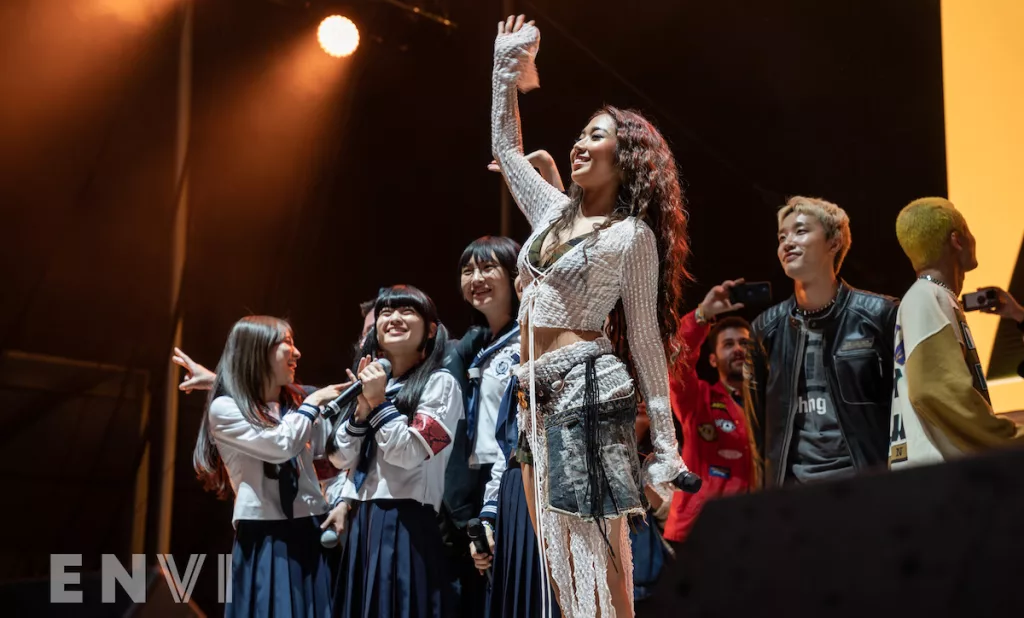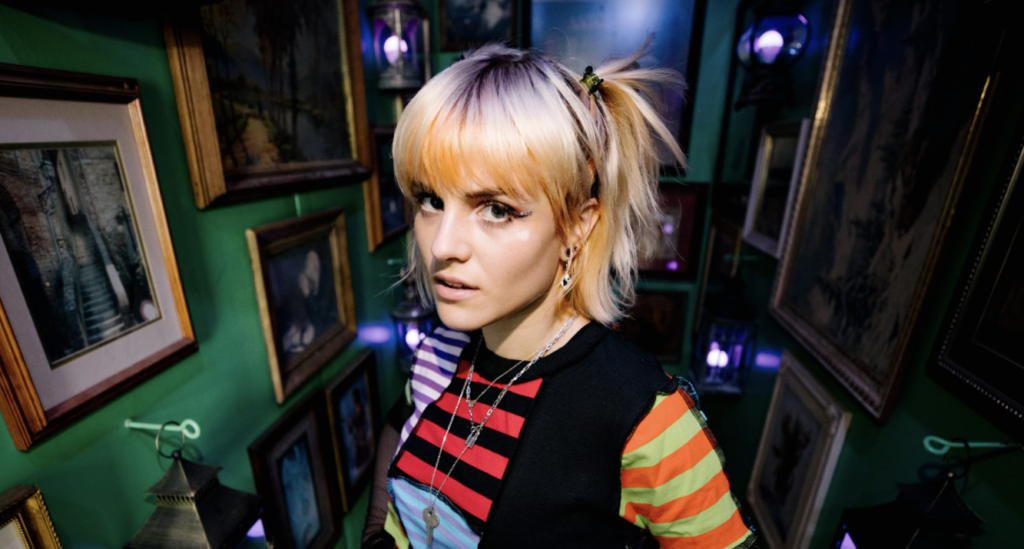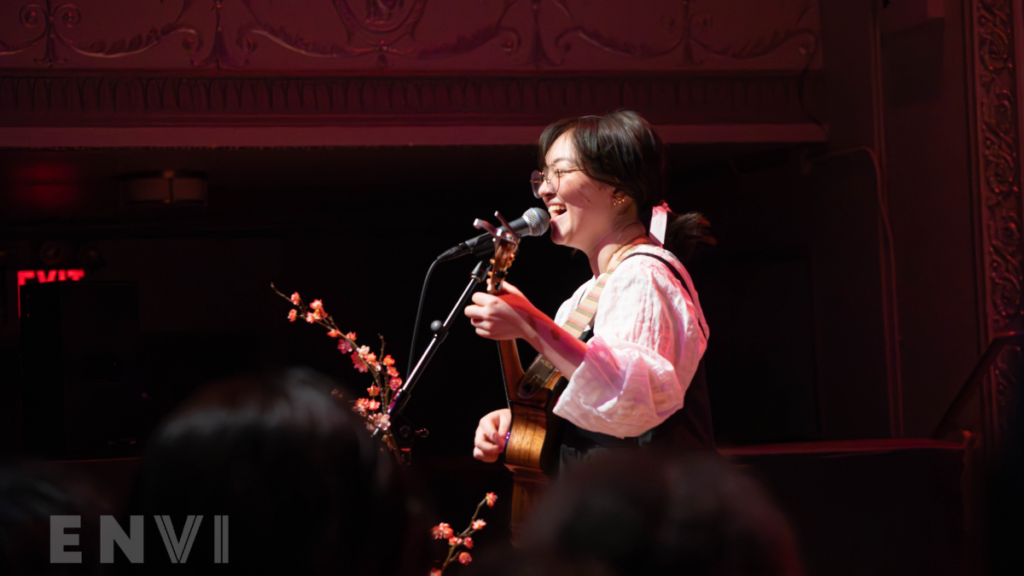Creative Spotlight: Shenuka Corea on Fan Art and the Power of Visual Narratives
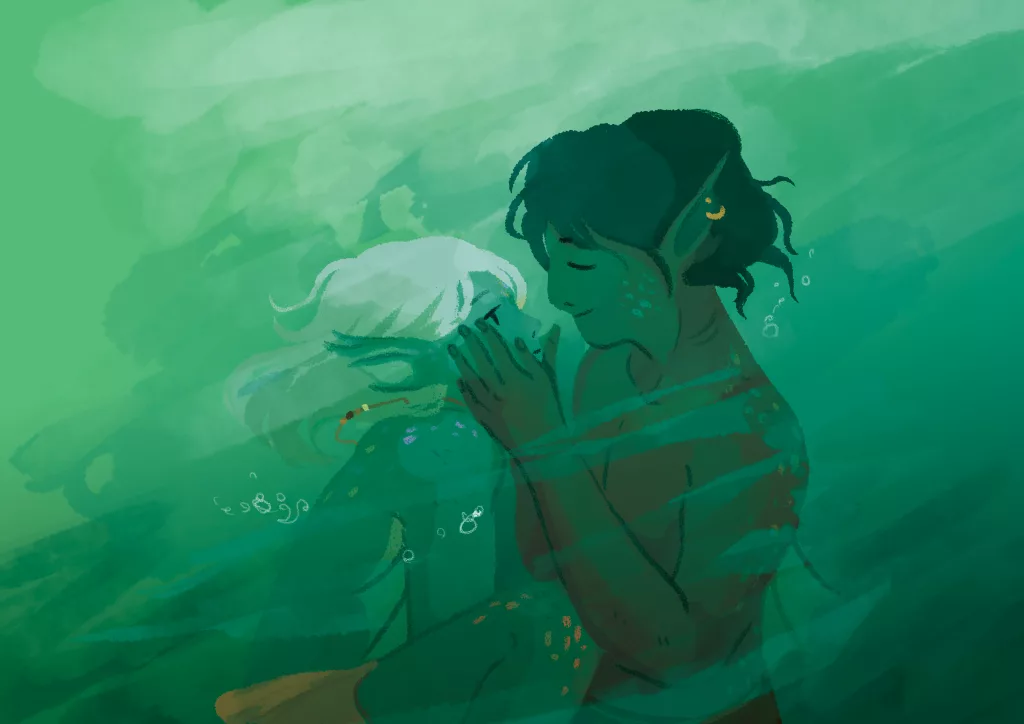
It’s a new year, and EnVi has exciting content for you to discover in 2024! This January, we are spotlighting emerging talent from all across the Asian diaspora and beyond. From fresh music releases to silver screen debuts, check out some of our new favorite up-and-coming creatives to keep an eye on.
Shenuka Corea is a Sri Lankan comic artist, animator, and illustrator who has most recently ventured into filmmaking. Her portfolio has expanded immensely from her initial start in fan art, which she has been regularly posting on her Instagram account @baka.moona since 2017. Nowadays, she also uses art to tell stories she is passionate about, dealing with topics ranging from mental health, to the effects of colonialism. Her portfolio is extensive, with her work even being featured in publications like Spectrum, a comic that portrays the discrimination faced by the LGBTQI community of Sri Lanka, published by Amnesty International. Some of her clients include Shortbox Comic, Think Equal, and Motion Miracles. EnVi chatted with Corea to learn more about her origins, and her views on art and storytelling.
For Fans by a Fan
Corea traces the start of her journey as a graphic artist back to when she was at the age when young children are encouraged to draw and express themselves through art. Like most artists, she never stopped drawing. She took art classes until she was 16 and studied art for her A Levels, and bachelor’s degree, Currently, Corea is pursuing a Master of Fine Arts in Visual Narratives at the School of Visual Arts in New York.
Growing up, art was a medium of expression that allowed her to develop her skills and create something of her own. Inspired by the media she consumed as a child and seeing the work of other artists on sites like Tumblr, Deviant Art, and YouTube, Corea gradually ventured into the fan art space. She recalled having multiple sketchbooks a year, in which she would first interpret the books she read as art. Gradually, shows like Game of Thrones and Doctor Who would inspire her to expand her art into other fandom spaces.
Corea told us that being a fan made her want to create her own fan art, emphasizing that it is more than copying; Art has been reinterpreted throughout history and people have always been inspired by the art that came before them. “As long as you’re doing something transformative, then fan art is more compelling. At least to me, it is,” she said.
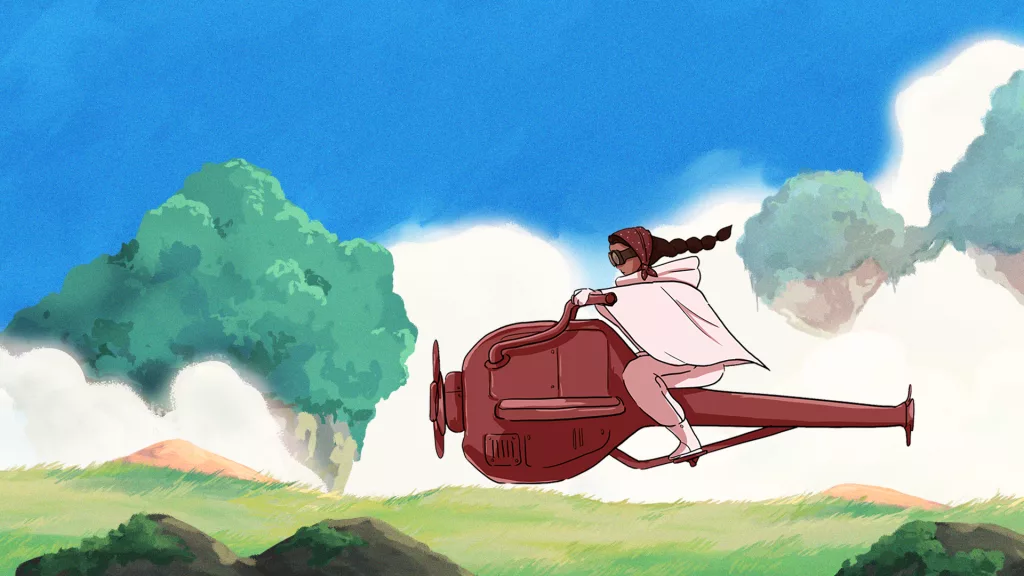
Indeed, it is, and a scroll through of her Instagram account makes that very apparent. Her fan art covers different areas of pop culture, from anime like Haikyuu!, to Chinese donghua’s like The Untamed and Heaven Official’s Blessing. Corea also posts original artwork of characters on her Instagram account, much of which represents aspects of her culture captured in her unique style.
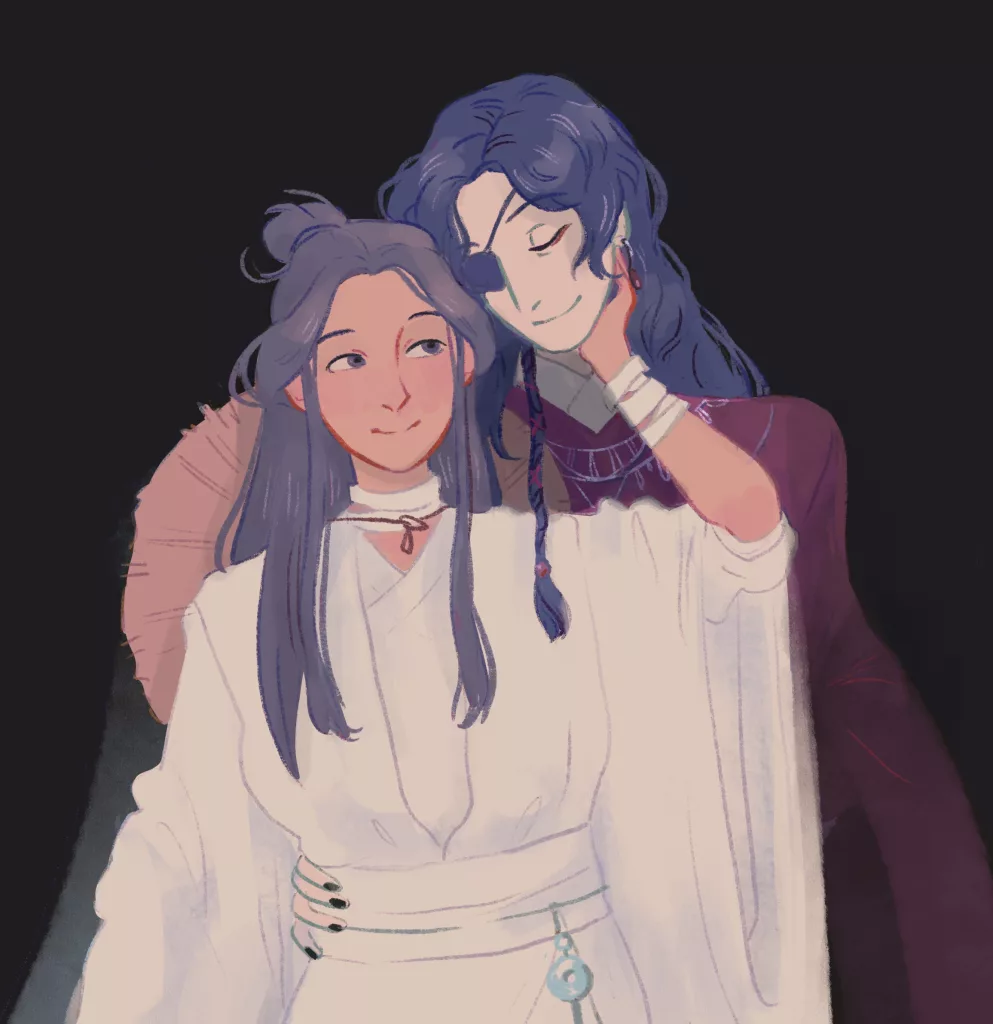
The Aesthetic Issue
When asked how she would describe her aesthetic, she shared that it was a struggle to define her art. She once used the term “whimsy gothic” during one of her classes, a term that she is not truly satisfied with. We learned that she’s not keen on giving it a label either as she believes that all artists evolve and grow. She told us, “I’m worried that if I define it too much, it can affect the way I see my art. Sometimes choosing labels can define how you see yourself.”
Corea stressed that people should make art without worrying too much about the artistic landscape, which she, however, understands given the current state of marketing and social media. As she aptly said, aesthetics can be fun, but also too constricting.
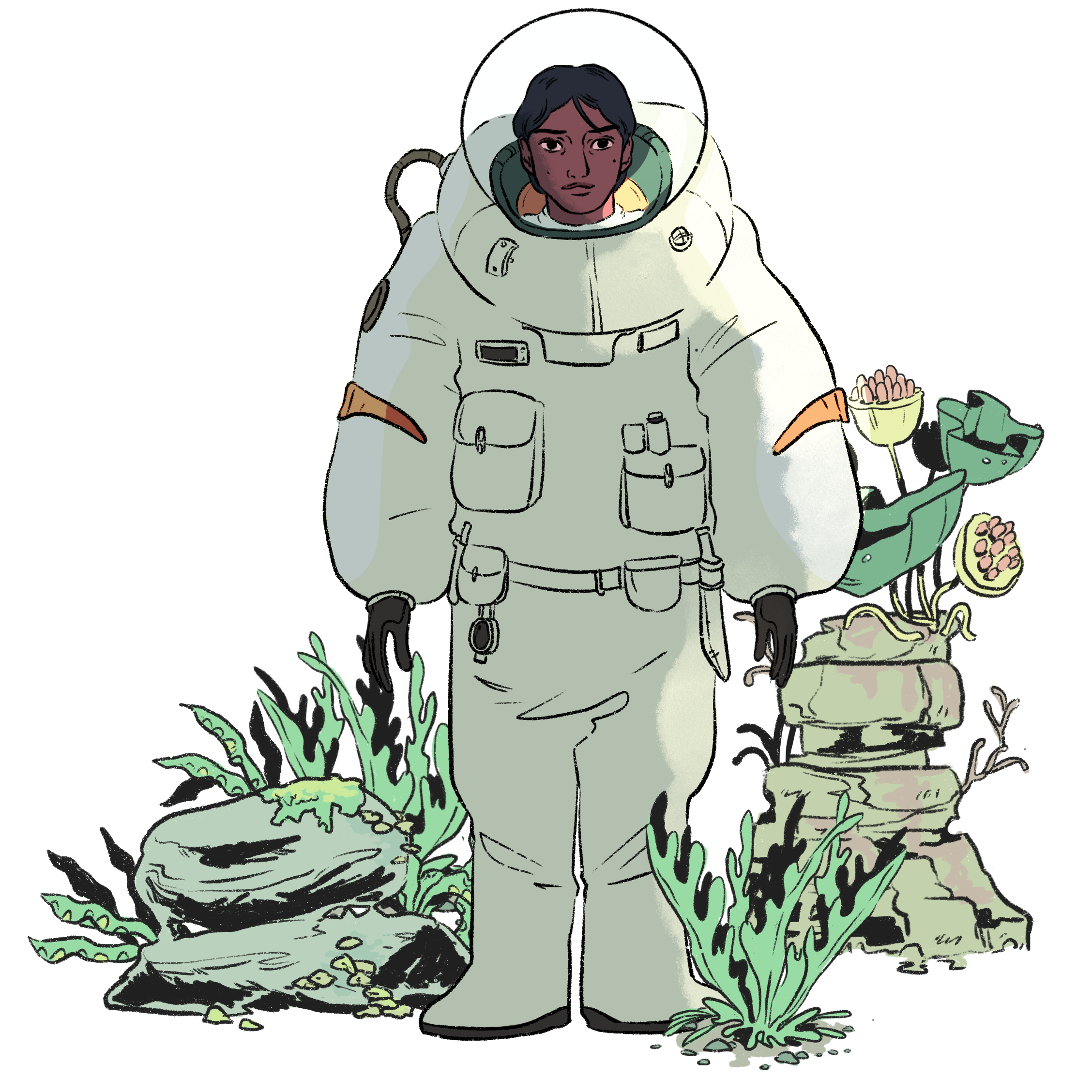
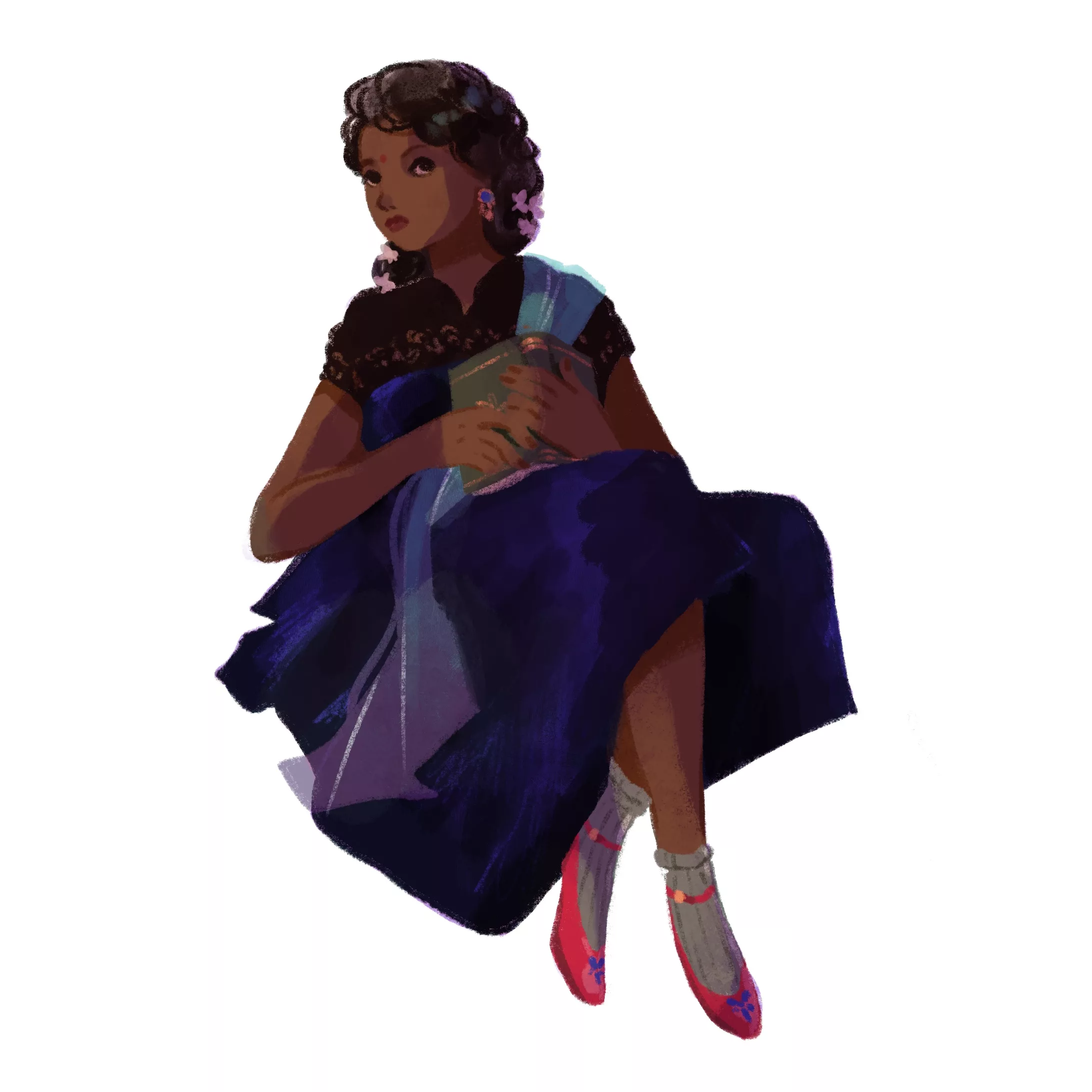
The Power of Visual Narratives
Shenuka Corea was one of four artists to contribute a comic for Spectrum published by Amnesty International based on real accounts from the LGBTQI community in Sri Lanka. Her portfolio contains a number of projects that similarly use art as a medium to spotlight social issues through visual narratives, combining art and text to create a story.
To Corea, storytelling and art are ways of sharing your perspective, especially when one might not see the world as you do. However, she also thinks that at times, looking solely at the “usefulness” of one’s art can harm its process — referring to discussions of diversity almost becoming a commodity in the film industry, where representation seems to only be seen on screen and not in the story that is being told. Corea believes that while there is value in reflecting society with one’s art, artists should be conscious of the stories or messages they undertake in their work. “People should be empowered to tell their own stories,” she said, stressing the importance of uplifting voices, and providing a platform for their narratives to be shared with the world.
Alternative Storytelling
After getting her start as a fan artist, Corea is keen to explore her own stories and characters, and shares much of it on her social media as well. Despite many of her early influences being Western, she is inspired to create fantasy worlds that are closer to home and incorporate non-Western mythologies, beliefs and values.
This is quite prevalent in her bachelor’s thesis, Manthiram (a Tamil word that refers to magic spells or rituals). Described as a graphic history, it is based on the pearl fisheries that existed during Sri Lanka’s colonial period in the town of Mannar. Corea’s fascination with the topic came from her travels with her mother around Sri Lanka and a chapter from a book titled Handbook for the Ceylon Traveller.
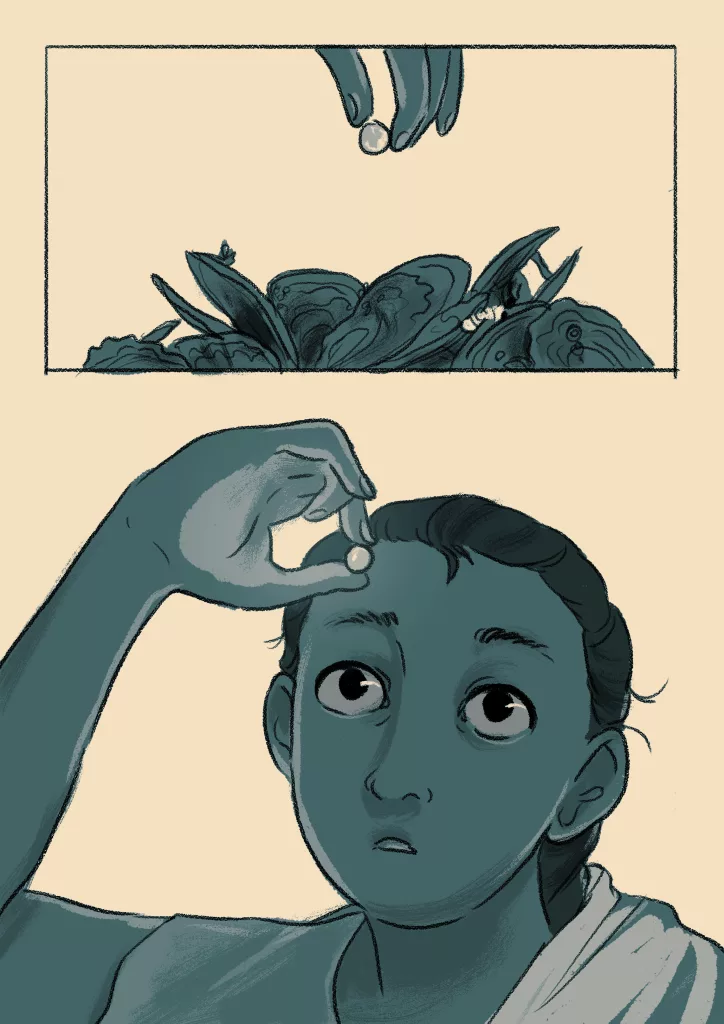
According to her website, Manthiram “explores humanity’s enchantment with the sea and its treasures, and the charms and rituals with which we attempt to commune with it.” The title is derived from the existence of shark charmers, who were historically responsible for ensuring the safety of the divers by chanting to the sharks. The documents that were Corea’s source material for this project were narrated from the point of view of colonial officers at the time, who appeared to see the ocean as an endless resource. Perspective from the divers themselves was absent, but these documents mentioned the attitudes and traditions of the pearl fishery community, such as the shark chanting that had persisted long before colonialism. This motivated her to dig deeper and explore an alternative narrative, focusing on the relationship between the divers, their beliefs, and the ocean as a living entity.
What’s to Come
While Corea looks into possibilities of publishing Manthiram, she is currently working on her master’s thesis, another graphic comic project titled A Field Guide to Paradise. Unlike Manthiram, this work is entirely fictional, based on her interests in travel and nature. Guided by her interest in capturing simple stories against a backdrop of a world entirely removed from reality, she hopes to tell a story that is original and entirely her own.
Check out Shenuka Corea’s website for her portfolio, and her Instagram for more of her art and upcoming projects.
Interested in learning more about emerging talent across the Asian diaspora and beyond? Check out our interview with photographer Haneul Lee, here!
